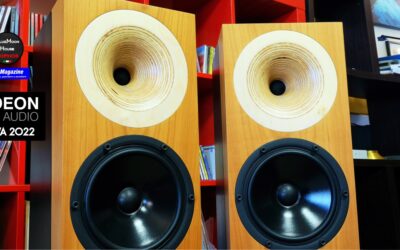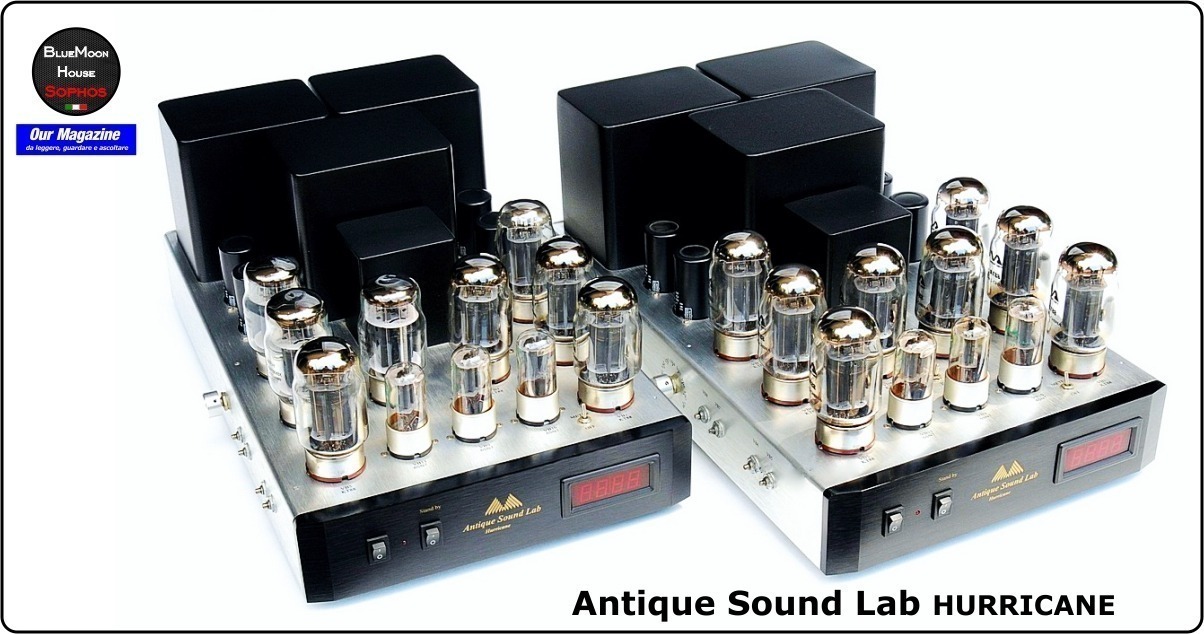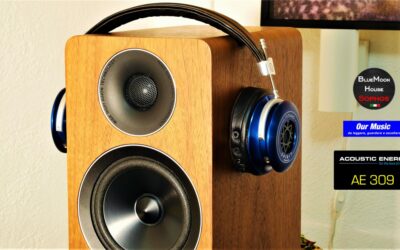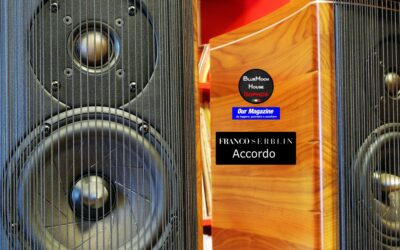Reviews
Conrad Johnson Premier Seven – Tube Premplifier
Name: Conrad Johnson Premier Seven
Type: Tube Preamplifier
Country: USA
Year: 1988
Premier Seven, Premier Seven-A, & Seven-B Vacuum Tube Pre-Amplifiers
Introduced in April 1988, Premier Seven-A July 1990, Premier Seven-B October 1992
Premier Seven
each channel Tube
V1: 6CW4
V2 V6: 6GK5
Premier Seven-A, Seven-B
each channel Tube
V1 & V2: 6CW4
V3-V6: 6GK5
Specifications:
Gain: Phono Stage 40 dB (phono overload 150 mV at 1kHz)
Line Stage 29 dB
Distortion: less than .25% THD or IMD
Response: bandpass 2Hz to more than 100kHz
RIAA equalization +/- .25 dB (20 to 20 kHz)
S/N Ratio: Phono Stage 80 dB below 10 mv input
Line Stage 88 dB below 2.5 volt output
Dimensions: control unit 19″ X 7″ x 16″
power supply 19″ X 3.5″ X 15 _”
Weight: 60 lbs.
Rear
Conrad Johnson Premier Seven . Il Conrad Johnson è stato progettato per colmare il divario tra il suono riprodotto e la musica dal vivo, per portarci vicino del fine ultimo, cioè riprodurre esattamente un evento musicale dal vivo. Obiettivi senza compromessi richiedono soluzioni senza compromessi. Svincolato da considerazioni di costo, il Premier 7 incarna la conoscenza accumulata nell’arte della tecnologia di amplificazione elettronica e della musica registrata. Il circuito audio è interamente a valvolare, utilizzando 12 singoli triodi in configurazione zero feedback, oggetti superiori nei transienti audio. Una valvola di ingresso, nuvistore a basso rumore, con un selettore per l’impedenza d’ingresso, eleva il segnale MC.
Particolare Volume
Per isolare i singoli stadi di guadagno (tre per canale), ogni stadio ha la propria alimentazione a componenti discreti, con impedenza vicino a zero sullo spettro audio. Trasformatori, circuiti di alimentazione a valvole, e i pre-regolati di tensione, sono alloggiati in uno chassis separato, per eliminare ogni ronzio dai circuiti audio.
Per avere una separazione assoluta dei canali, il Premier 7 ha fatto due preamplificatori monofonici completamente indipendenti. Ha costruito due unità preamplificatrici, e una unità di alimentazione, in quattro chassic separati con enormi pannelli frontali anadizzati oro. All’interno di ogni chassis dei preamplificatori, i circuito audio e i relativi regolatori di tensione, sono montati un subchassic, su supporti antivibranti per ridurre al minimo microfonicità.
Il risultato e che il Premier 7 è uno degli amplificatori a valvole, che suonano bene come i migliore pre a stato solido.
Infatti questo preamplificatore a valvole è perfettamente neutro in quasi tutti gli aspetti sonori. La sezione ad alto livello ha una splendida grana fine. Il suono esce dolce, senza sforzo, aperto e arioso, ma con grande dettaglio. La risoluzione è eccellente su tutti i parametri, come lo è il soundstage. La coerenza delle varie gamme è al altissimo livello. L’immagine, all’interno e oltre le casse, è ben riprodotta e se la qualità della registrazione lo consente, dagli altoparlanti esce un suono ben dettagliato e reale. Non c’è forzatura nella riproduzione e manca anche quel senso di “abbagliamento”, tipico delle riproduzioni forzate ed esagerate. La parte centrale dello spettro audio è resa in maniera che passa tutto il segnale che proviene dagli ingressi del preamplificatore.
Solo nella parte bassa, il Premier 7 fornisce una sua verità, con un leggero diminuzione della pressione sonora con una graduale attenuazione della risposta fino a 50Hz. E’ una pecca abbastanza sottile. Ma questa caratteristica forse sarà meno accettata dagli audiofili, che avrebbero invece più sopportato una leggera esaltazione nella stessa gamma.
http://www.listeninn.com/product/407001-10528/Pre-Amplifier/Conrad-Johnson-Premier-7
Adattamento italiano di
Massimo Piantini
Front: Power Supply
The Conrad Johnson Premier 7 was designed to close the gap between reproduced sound and live music, to bring us near to the ultimate goal of exactly reproducing a live musical event. Uncompromised objectives demand equally uncompromised solutions. Unfettered by considerations of cost, the Premier 7 embodies our accumulated knowledge of the art and technology of electronic amplification of recorded music. The audio circuit is an all vacuum tube design, using 12 single triodes in a zero feedback configuration for superior transient properties. A low-noice nuvistor input tube accommodates relatively low ouput movie coil cartridges, and a phono impedance selector facilitates catridge matching.
In Side: Power Supply
To absolutely isolate the individual gain stages (three per channel) each stage has its own discrete solid state regulated power supply designed for near zero impedance to all audio frequencies. Tranformers, filament supply circuits, and the pre-regulated plate supplies are housed in remote chassis to elimate hum field from the audio circuits. To acheive absolute channel separation, the Premier 7 is actually two completely independent monaural preamplifiers in four separate chassic with massive gold anadized front panels combining the channels into a control unit and a power supply unit. Inside each control unit chassis, the critical audio circuitry and associated power supply regulators are fitted to a subchassic on isolation mounts to minimize microphonics.
In Side: Power Supply
When hooking up and playing, the Premier 7 is one of the tube amplifiers sounding like the best solid-state. It is in fact about as close as any tube preamp has come to being perfectly neutral in sound in nearly all respects. The high-level section has a gorgeous top end of effortlessly sweet, open, and airy, yet immensely detailed. Resolution of detail is excellent across the board, as are all aspects of soundstage presentation. Its phase-coherence can present a very specific, tightly bunched image, and also produce convincing images way out beyond the locational limits of the speakers when suitably phased signal is delivered to it.
There is no forwardness and no tubelike “glare”. The midrange is an essentially perfect replica of whatever you feed into the preamp. Only at the low end does the Premier 7 stray from Ultimate Truth, with a slight thinning-out of bottom which sounds like a gradual frequency-response rolloff setting in at 50Hz. It’s a fairly subtle thing, but even a slight error in this direction will be less well received by most audiophiles than would an equal amount of low-bass exaggeration.
Introduced in April 1988, Premier Seven-A July 1990, Premier Seven-B October 1992
http://www.conradjohnson.com/It_just_sounds_right/a-pr7.html
The Conrad Johnson Premier 7 was designed to close the gap between reproduced sound and live music, to bring us near to the ultimate goal of exactly…..
http://www.listeninn.com/product/407001-10528/Pre-Amplifier/Conrad-Johnson-Premier-7
Whenever an audio high-ender thinks about tubes, he usually thinks about Audio Research. This is only natural, because Audio Research Corporation was
http://www.stereophile.com/tubepreamps/1188cj7/index.html








![P7_pw_inside[1]](http://www.vintagehificlub.com/wp-content/uploads/2013/04/P7_pw_inside1.jpg)




















